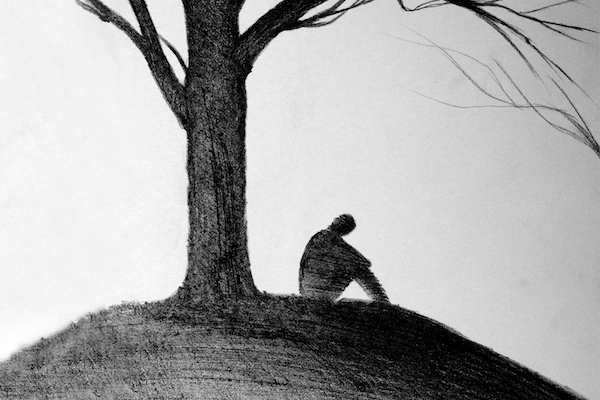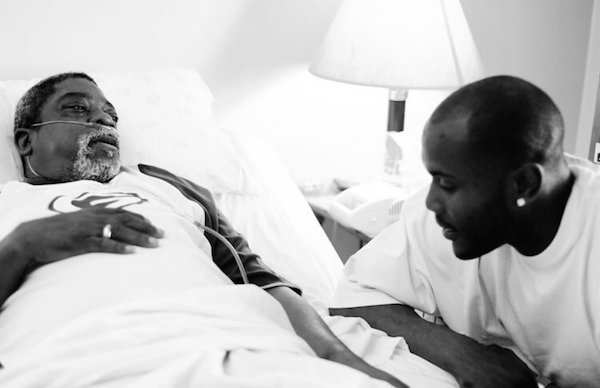In the season of giving, hospice grants patients’ end-of-life wishes

[D]eborah Holmes adjusted her glasses, eyes watering as she glanced up at the ceiling of Seasons Hospice’s family room.
“I’m glad I didn’t wear mascara again today, though none of us [nurses] do much because we cry so often,” she said, smiling as her voice cracked. “I’ve almost given up wearing glasses they fog up so much too.”
Steadying her voice, Holmes laughed — a mixture of sadness, humor and joy.
Though the holiday season is often thought of as an especially important time for giving and making wishes come true, for Holmes and her fellow employees at Seasons Hospice, every day is an important time to grant wishes to their patients, the overwhelming majority of who are dying.
Unlike hospitals, which mainly focus on curative measures for patients — even those who are terminally ill — hospices are intended to provide comfort and love to a person in his or her last days, weeks and even months.
Hospice workers give the gift of dignified end-of-life care daily, holiday season or not, Holmes said, which she added is the most rewarding part of her job.
“Seeing those patients be free of those acute symptoms — to not be writhing in pain, to have that hospice success, to see them share laughs and hugs and things with their grandchildren and their own children — that’s the best,” she said.
“At night when I lay down — and it’s me and God, that’s who I deal with — knowing that that family member made it for their son to come home from the military, for that nephew to come in from out-of-state, for that patient to have their cat on their lap or for them to eat lunch without their oxygen because that’s what they want to do and they don’t care how low their stats drop, it’s those things, just making sure they have what they need, that’s my measure of success.”
The success varies from patient to patient, though, who range in age anywhere from 18 to 98.
“We do get very young patients; usually 18 years old and up, though we do get a lot of 30s, a lot of early 40s and 50s [and] a lot of 60s,” Holmes said. “Usually, cancer is the culprit, unfortunately, and those are especially hard because the [patients] generally have young families and their parents are still with us a lot of times. To have that parent experience the loss of their child at such an early age is absolutely devastating.”
As she continues, Holmes’ smile fades, sadness beginning to cloud her coffee-colored eyes.
“I’ll be honest,” she said. “In my 25 years of nursing, fortunately and unfortunately I’ve been involved in quite a number of situations where you do kind of go numb after a while. When I meet these family members, too, they don’t know what hospice is and I think it’s because there’s not a lot of talk in the community about hospice.
She added: “We’re not here to take anybody’s lives; we’re here to enhance the time that is left, so I do comedy with them. I may crack a little joke and I kind of develop a little joke with each and every family member or patient and that’s what I keep thinking about. It just brings a smile to my face because you know that was a connection that you made with those people.”
It’s the connections, too, that hospice employees make with one another that lighten the nurses’ daily burdens, as well as family, friends and pets.
In Bulldog country, the University of Georgia’s recent SEC championship and the team’s January trip to Pasadena, Calif., where they’ll challenge No. 2 seed Oklahoma in the Rose Bowl Game, also helps, Holmes said.
Lisa Price, one of the facility’s social workers, smiled, half-whispering ‘Go Dawgs’ as Holmes paused, mid-sentence.
“That’s the thing about it,” Price interjected. “We’re a big team and none of us could do our job without the others and the families, too. We have a good social and psych support here, and we’re a team.”
That team is part of what keeps Holmes coming back to work every morning, good days and bad. Her patients, too, make the job worth it.
And, at the end of the day, Holmes said she also knows she can turn on her radio, cued to a Pandora comedy station, and just laugh.
“I have a really good sense of humor; I love to laugh and I love to crack jokes,” she said. “I think it’s real important to keep a good sense of humor because even patients who are terminal, they still like to laugh and joke and kid, and we really enjoy that part, too. It’s not all crying; it can be, some situations that’s just where you’re at, but it’s all about making this better.”
Complete Article ↪HERE↩!






